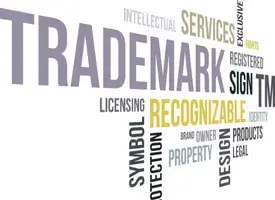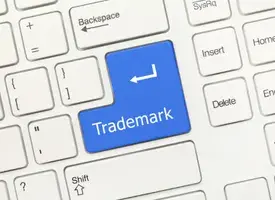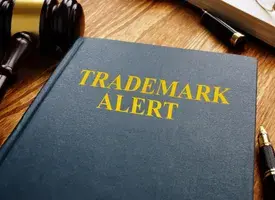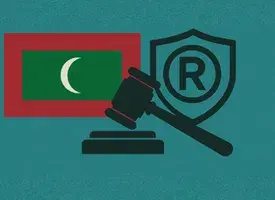TRADEMARKS FILING AND PROSECUTION NICARAGUA
A trademark is a sign that is registered to distinguish a product or service in commerce. There are other types of signs used in trade that can also be registered with the Nicaragua IP Office, such as logos, designations of origin, geographical indications, collective marks and certification or guarantee marks.
In order to legally protect a trademark or other sign used in commerce, it is necessary to register it with the Nicaragua IP Office. In Nicaragua, trademark protection is granted according to the provisions of Law No. 380 on Trademarks and Other Distinctive Signs, Nicaragua.
Trademark in Nicaragua may be designated by the following symbols:
- ® (for a registered trademark)
- ™ (for an unregistered trademark)
A trademark is typically a name, word, phrase, logo, symbol, design, image, or a combination of these elements. There is also a range of non-conventional trademarks comprising marks which do not fall into these standards categories, such as those based on colour, smell, or sound.
A trademark provides protection to the owner of the mark by ensuring the exclusive right to use it to identify goods or services, or to authorize another to use it in return for payment. Trademark protection also hinders the efforts of unfair competitors, such as counterfeiters, to use similar distinctive signs to market inferior or different products or services.
The owner of the registered trademark may initiate legal proceedings for trademark infringement to prevent unauthorized use of that trademark, and can license it to the third parties, sell it in return of sum, use it raise equity for business undertakings.
| Relevant office | Law No. 380 on Trademarks and Other Distinctive Signs, Nicaragua |
| Filing principle | First to file |
| Nice classification | YES |
| Paris convention | YES |
| Madrid system | NO |
| Multi class system | YES |
| Documents required for filing a trade mark application | Name and address of the applicant, clear representation of the trademark, list of goods and/or services and Legalized/Apostilled Power of Attorney. |
| Prosecution process | Filing, examination, publication, registration, renewal |
| Registration term | 10 years from the date of registration |
| Renewal term | 10 years |
Trademark searches in Nicaragua
Under the “First to File” principle, if any other applicants file applications for the identical or similar trademark used for identical or similar goods and services after the first applicant has applied, those later applications will be refused.
Therefore, it is advisable to conduct a trademark search prior to filing a trademark application to ascertain the availability of trademarks, existence of prior identical/similar marks on the register etc., so as to avoid any objection and opposition with respect to the mark.
A trademark search in Nicaragua can be conducted for word mark, numbers, images, etc. It is advisable to conduct comprehensive trademark clearance search in Nicaragua to ascertain availability of the proposed mark and also to overcome any objection and opposition with respect to mark later on.
Along with trademark search, it is also advisable to do a comprehensive company search and domain search of the proposed trademark in Nicaragua.
Filing trademark applications in Nicaragua
A person may file multi-class or single class trademark application in Nicaragua.
Trademark application can be filed in the following categories:
- Ordinary Applications
- Convention application (claiming priority from a convention country)
Ordinary application in Nicaragua
Ordinary trademark applications filed in Nicaragua are applications without claiming any priority. Multi class trademark applications may also be filed in Nicaragua. However, the trademarks act also lays down provisions regarding the filing of priority applications, wherein priority of the mark can be claimed in the said mark filed in a convention country.
Priority trademark applications in Nicaragua /Convention trademark applications Nicaragua:
A priority trademark application may be filed in Nicaragua. A priority trademark application should be filed in Nicaragua within 6 months after the date on which the application was made in the convention country.
Paris convention
The Paris Convention for the Protection of Industrial Property, signed in Paris, France, on March 20, 1883, established a Union for the protection of industrial property. It offers national treatment to the applicant residing in the member country of the union, in other words. National treatment is a very important concept and is essential for successfully achieving the fundamental aim of the Paris Convention. The idea is to provide equal treatment to applications from member countries, in a given member country and not to differentiate between the nationals of member countries for the purpose of grant, and protection of industrial property. Priority application can be filed in Nicaragua within six months after the date on which the application was made in the Convention Countries.
Trademark classes for goods and services
Nicaragua follows the nice classification of classes. Intellectual property office of Nicaragua uses the nice classification of classes that groups together similar goods or services into 45 different classes. Classes 1 to 34 are assigned for the goods and classes 35 to 45 are assigned for the services. Each class contains well defined list of terms and cover all the goods and services.
Trademark Examination in Nicaragua
Once the application for the registration is submitted it goes through the examination process which consists of examination on the basis of Absolute and relative grounds of refusal.
Article 7: Inadmissible marks for intrinsic reasons. No sign included inany of the following cases will be registered as a mark:
a) a sign that lacks sufficient distinctive characteristics with respect to the product or service to which it will be applied;
b) a sign contrary to the Law, public order or moral;
c) a sign that consists of the usual or common form of the product to which it is applied or its packaging or container, or in a form necessary or imposed by the nature of the corresponding product or service;
d) a sign that consists of a form or sign that gives a functional or technical advantage to the product or service to which it is applied;
e) a sign that consists exclusively of a usual sign or an indication that, in common or technical language, is used to designate the product or service to which it is applied
f) a sign that designates, or describes or qualifies the characteristics, qualities or other data corresponding to the product or service that it seeks to identify
g) colors by themselves
i) signs likely to give rise to confusion or errors regarding the geographical origin, nature, method of production, qualities, suitability for use or consumption, quantity or any other characteristic of the product or service to which it is applied;
j) a sign that consists of a geographical indication that does not conform to the provisions of the second paragraph of Art.3 of the present Law;
k) a sign that constitutes a total or partial reproduction or imitation of a shield, flag or other emblem, acronyms, denomination or abbreviation of denomination of any State or international organization;
l) a sign that includes a total or partial reproduction or imitation of an official sign or of a guarantee or control sign of any State or national or foreign, departmental, provincial or municipal public entity, without the authorization of the competent authority;
m) a sign that consists of a denomination of a vegetable variety protected as such in the country or outside the country, if the sign is to be used on products or services related to such variety or if its use would be likely to give rise to confusion or association with it;
n) a sign that reproduces coins or bills in legal circulation in the territory of any country, securities or any other commercial documents, seals, stamps, tax stamps or fiscal species in general, or,
o) a sign that includes or reproduces medals, prizes, diplomas or other elements that would imply the obtantion of rewards with respect to the corresponding product or service, unless such rewards have truly been granted to the party applying for the registration or his/her/its assignee, and such fact is duly credited at the moment of applying for the registration.
Notwithstanding the provisions of sections e), f) and g), a sign can be registered as a mark when the party applying for its registration or his/her/its assignee has been using it in the country, and, through such use, the sign has acquired sufficient distinctive capability with respect to the products or services to which it is applied.
Article 8: Inadmissible marks due to third party rights. It will not be possible to register as a mark a sign, which use would affect a prior third party right. It is understood that a prior third party right is affected in any of the following cases, amongst others:
a) The sign is identical to a registered mark or a mark pending registration in the country, by a third party, from a prior date, to distinguish the same products or services.
b) The sign is identical or similar to a registered mark or a mark pending registration in the country by a third party, from a prior date, to distinguish the same or different products or services, if its use can cause confusion or association with such mark.
c) The sign is identical or similar to a commercial name, a sign or emblem belonging to a third party from a prior date, and its use can cause confusion or association with such commercial name, sign or emblem.
d) The sign constitutes a total or partial reproduction, imitation, translation, transliteration or transcription of a well-known distinctive sign belonging to a third party, regardless of the products or services to which the sign is applied, when its use can cause confusion or association with such well-known distinctive sign, or the dilution of its distinctive force or its commercial or advertising value or would lead to an unfair enjoyment of the fame of the sign.
e) The sign would affect the right to the personality of a third party, especially if it is the name, signature, title, hypocorism, pseudonym, image or portrait of a party different from the one applying for the registration, unless the consent of such party or, if the party has passed away, of those that have been declared his/her heirs, is duly credited.
f) The sign would affect the right to the name, image or prestige of a juridical person or local, regional or national community, unless the express consent of the competent authority of such person or community, is duly credited.
g) The sign contains a denomination of origin, protected for the same products or for different products, when its use may cause confusion or association with the denomination or would lead to an unfair enjoyment of its fame.
h) The sign causes prejudice to a copyright, industrial property right or third party right, protected by a figure different from the ones governed by the present Law.
i) The sign for which registration has been applied is identical or similar to a sign that has been used in good faith in the national territory by a third
Trademark Opposition in Nicaragua
Any interested person, within 30 days from the date of publication of the mark in the Official Bulletin, has the right to file to the Controller an opposition to the registration of the mark.
Trademark registration in Nicaragua
After the examination, opposition process is completed and the mark is accepted for registration, the mark will be registered for a period of 10 years from date of registration, and the registration certificate is issued.
Trademark Renewal in Nicaragua
You can renew your trademark right by filing a request for renewal six (6) months before the trademark right expires.







